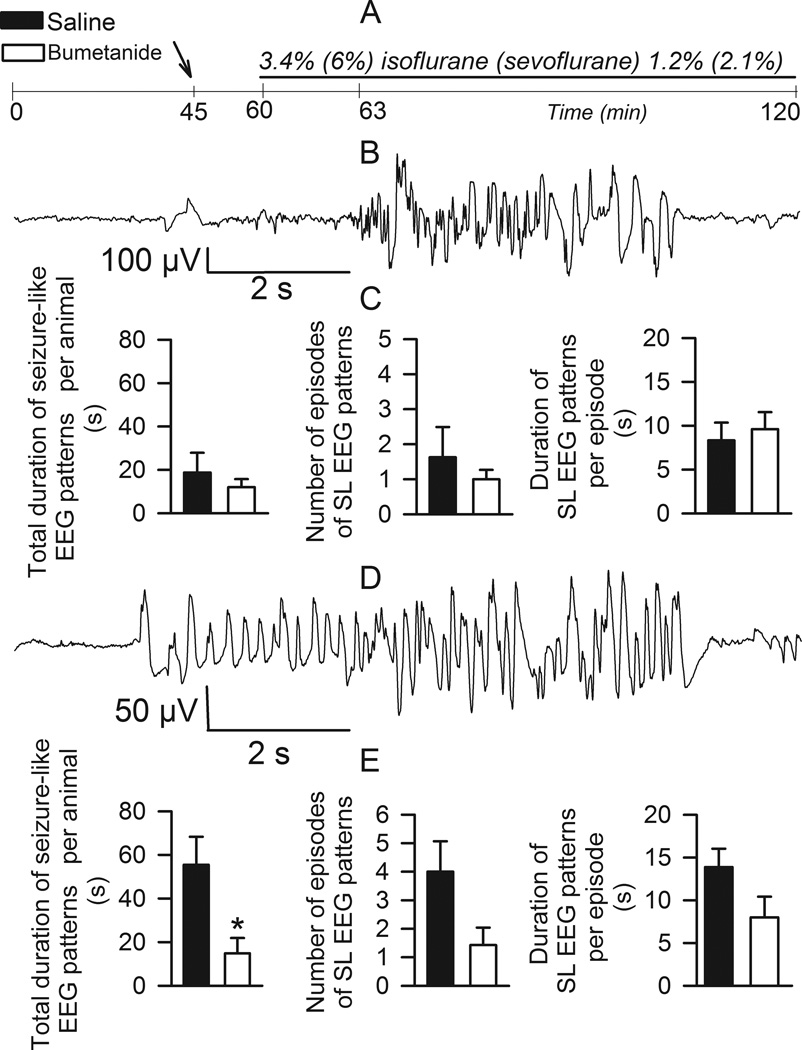Figure 1.
Seizure-like electroencephalogram (EEG) patterns in neonatal rats anesthetized with isoflurane or sevoflurane. A: Illustration of the experimental protocol. B: An example of electroencephalogram recording of seizure-like electroencephalogram pattern in a P6 rat during 1.2% isoflurane anesthesia. C: Histograms showing properties of seizure-like electroencephalogram (SL EEG) patterns in neonatal rats anesthetized with 1.2% isoflurane that were pretreated with either bumetanide (5 µmol/kg, intraperitoneally, n=8, filled bars) or equal volume of saline (n=8, open bars). D: An example of electroencephalogram recording of seizure-like electroencephalogram pattern in a P6 rat during 2.1% sevoflurane anesthesia. E: Histograms showing properties of seizure-like electroencephalogram patterns in neonatal rats anesthetized with 2.1% sevoflurane that were pretreated with either bumetanide (5 µmol/kg, intraperitoneally, n=7, filled bars) or equal volume of saline (n=6, open bars). *, P<0.05 vs. total duration of seizure-like electroencephalogram patterns in the saline-pretreated rats.

